
How To Rebuild The Rear Brake Caliper On Your 1994 – 2001 Yamaha YZ125
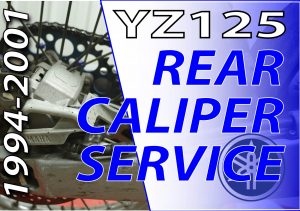 The rear caliper design on your Yamaha YZ125 had some slight redesigns between 1994 and 2001, but the same service applies to all model years.
The rear caliper design on your Yamaha YZ125 had some slight redesigns between 1994 and 2001, but the same service applies to all model years.
My bike is stripped, so I am removing the banjo bolt on the bench, but I would recommend removing yours while still mounted to the bike.
Brake fluid can damage almost everything, so keep your shop towels handy.
The Tools You Will Need
- 5mm Hex Wrench
- Calipers
- Picks
- 12mm Socket
- 8mm Socket
- Pliers
- Electrical Tape
- Snap Ring Pliers
The Parts You Will Need
The parts you will need are a rear caliper rebuild kit, rubber grease, and a fresh bottle dot four brake fluid.
If you don’t have parts yet, you can get all the parts you need HERE!
Make Sure To Service Your Entire Brake System!
Caliper Removal
- Start by removing the rear wheel and brake pads.
- Remove the caliper guard, then Pump the brake pedal to extend the piston out of the caliper body.
- With the piston extended as far as possible, remove the banjo bolt.
- Wrap the end of your brake line in a shop towel.
- Wrap a pair of pliers in electrical tape, and pull the piston out of the caliper in a twisting motion.
- Remove the slide boots from the caliper and bracket, followed by the bleeder valve and piston seals.
- My piston bore was extremely dirty, so I had to clean it before removing the piston seals.
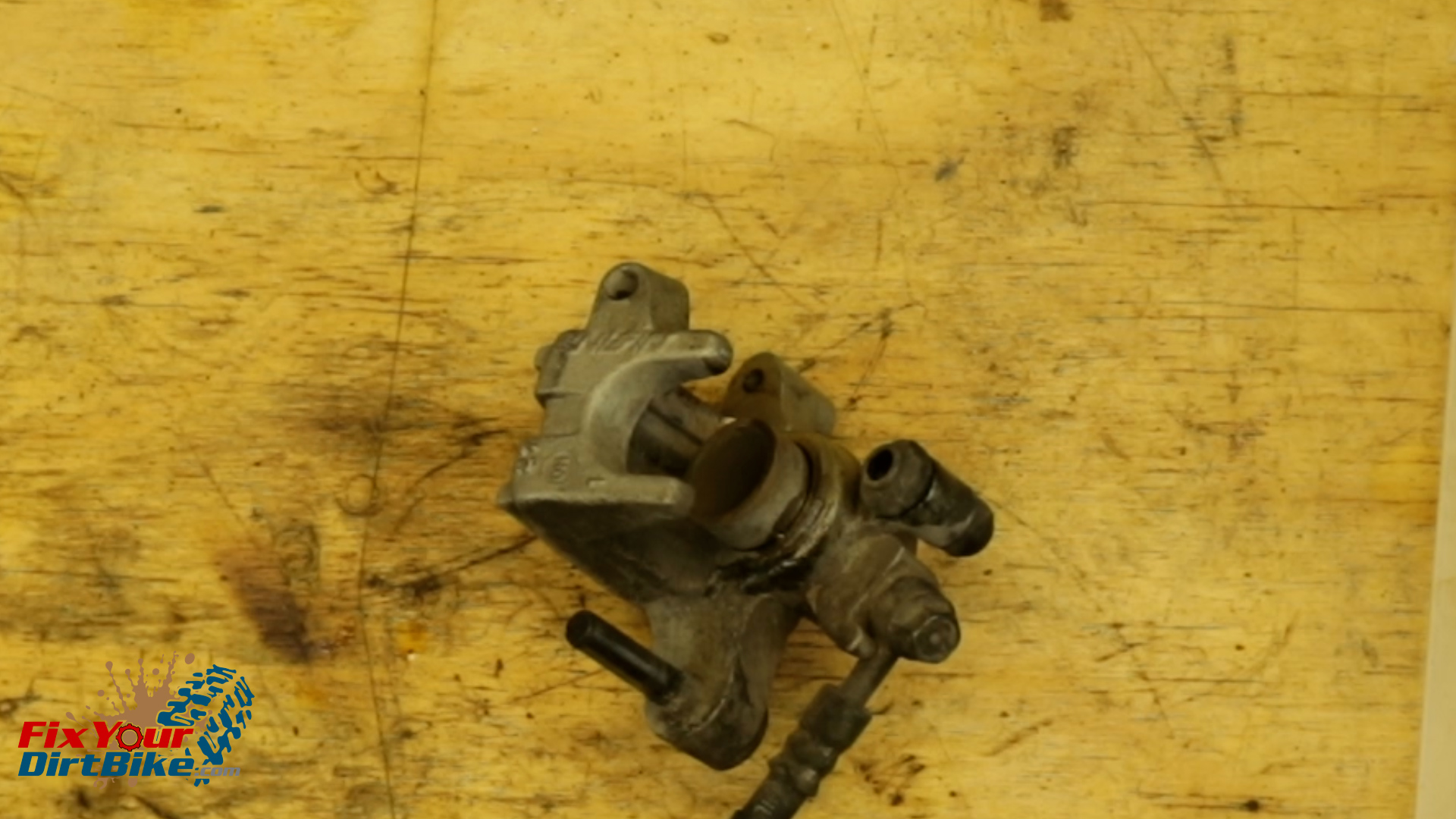
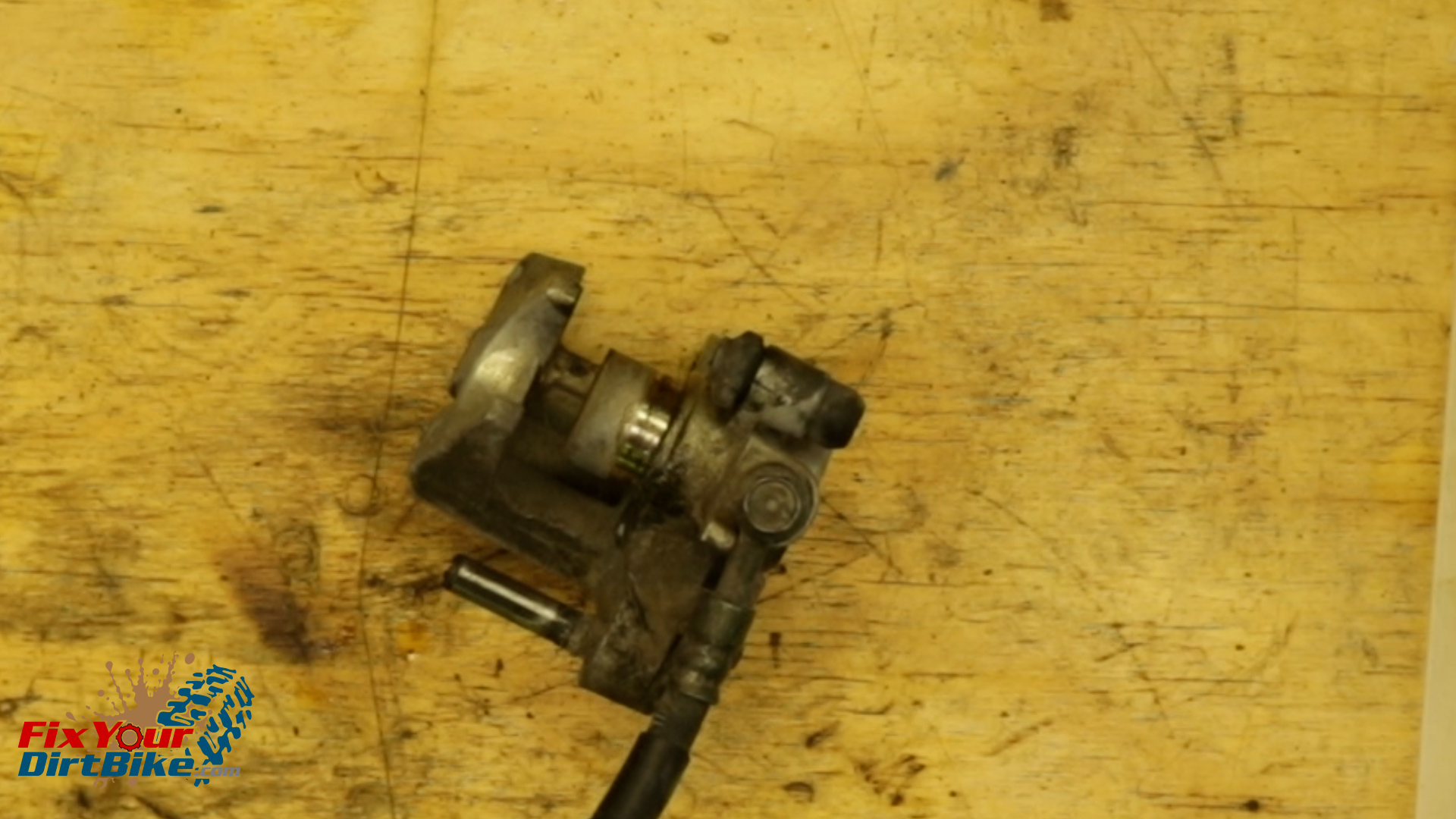
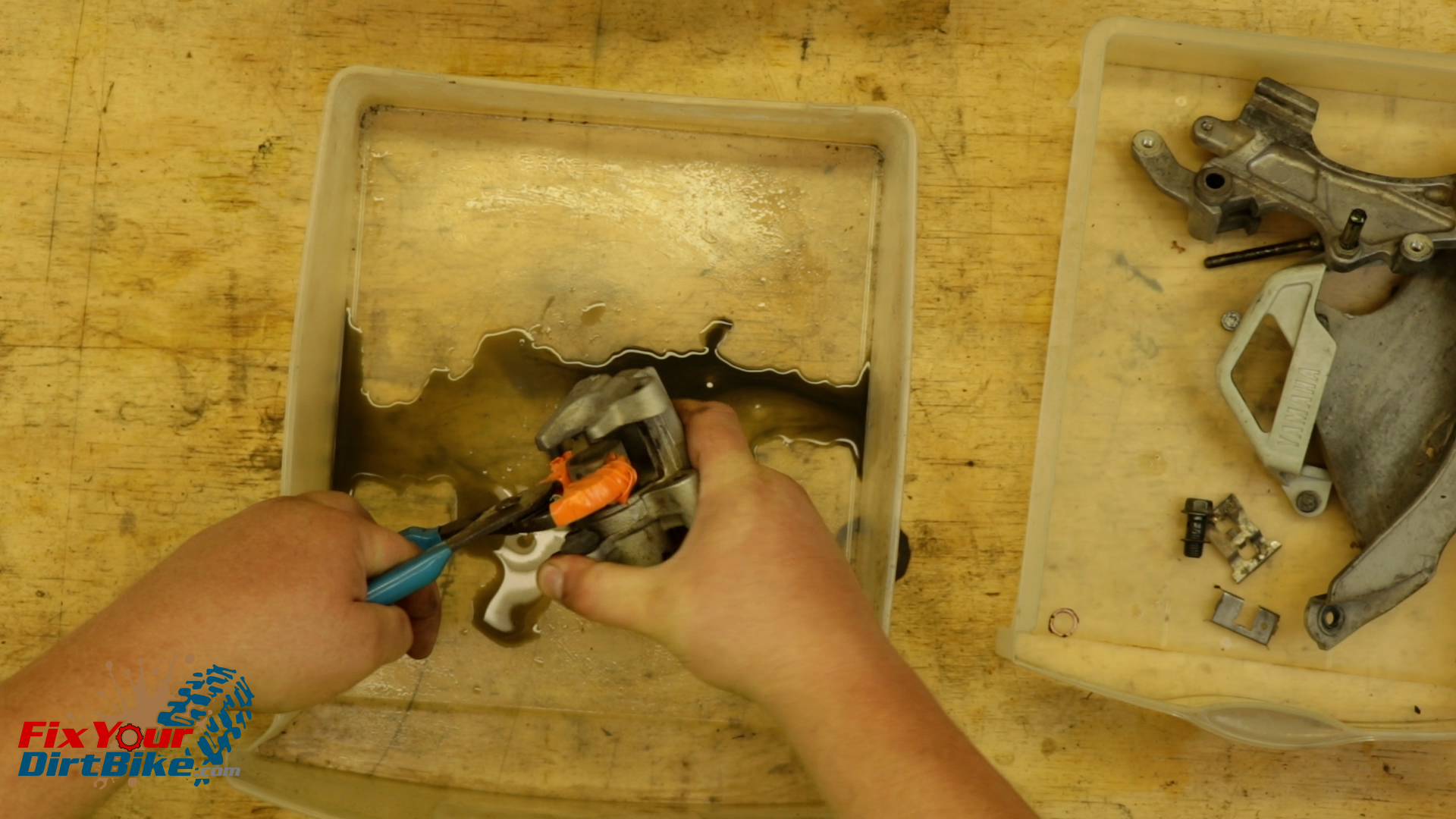
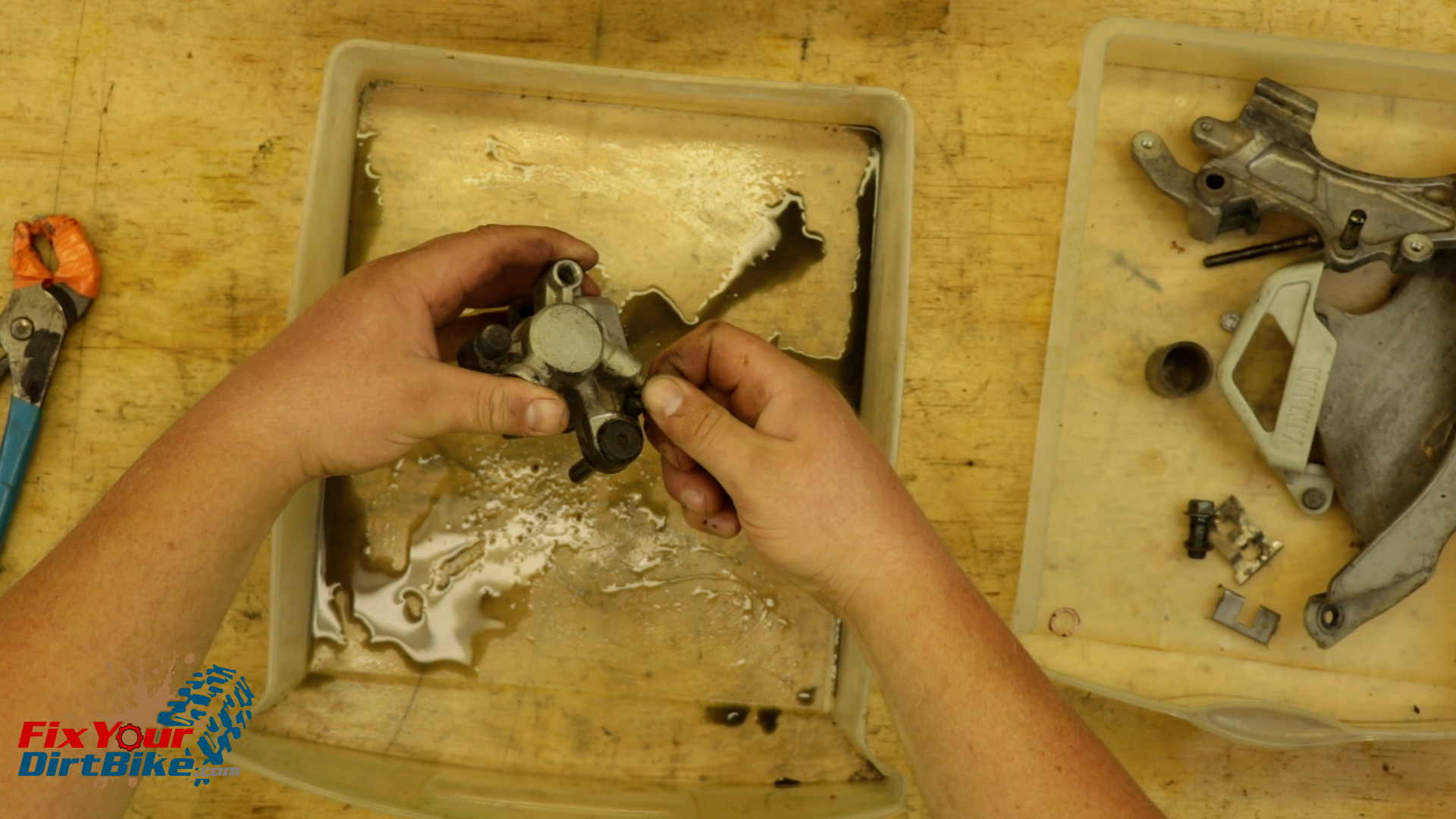
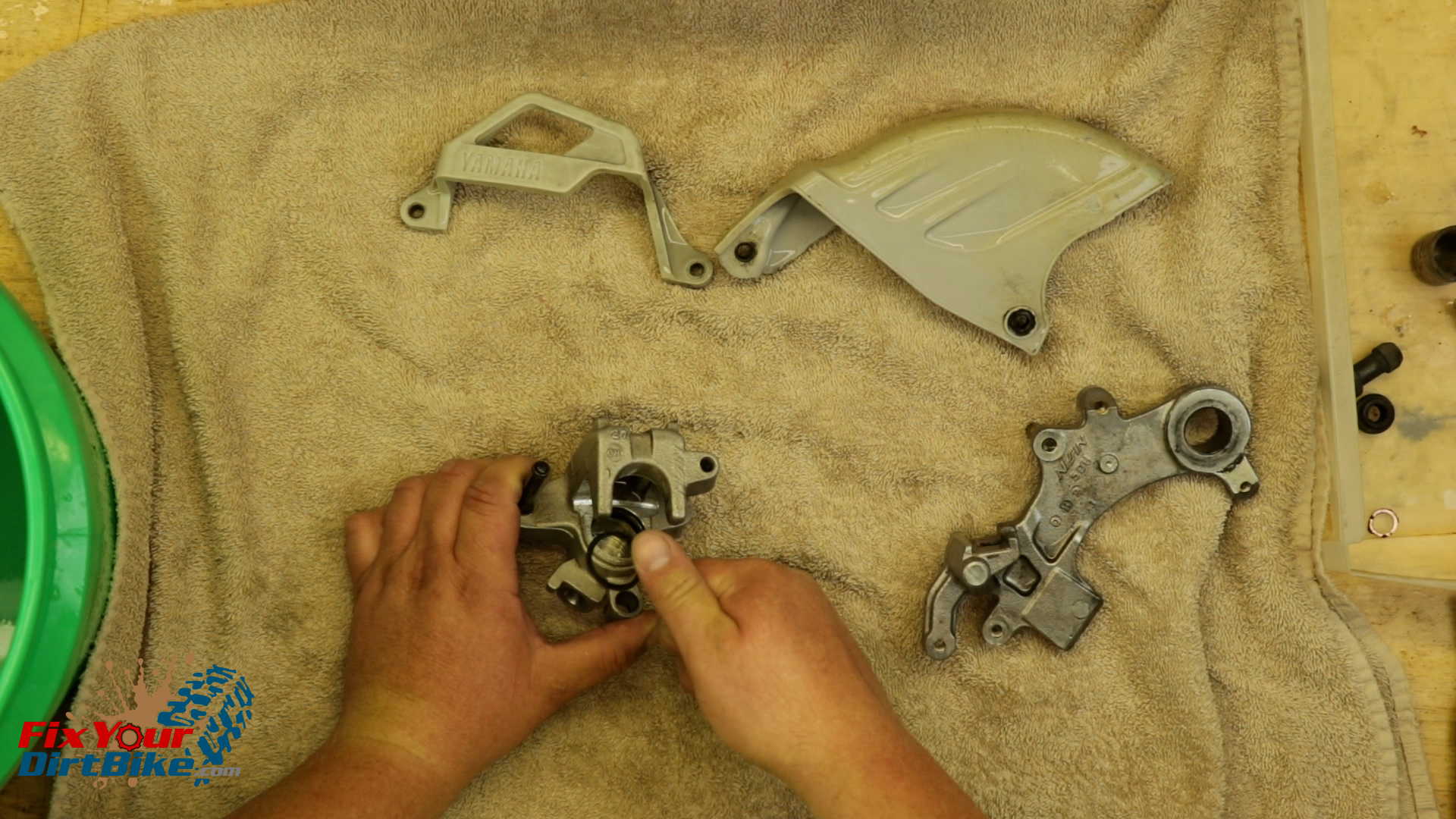
Clean & Inspect
- Clean all of your rear caliper components, and make sure to rinse and dry them thoroughly.
- Inspect the components for excessive wear, pitting, and corrosion.
- If any part is damaged, you will need to replace it.
- Measure the inside diameter of the piston bore.
- The piston bore should be no Greater than 30.23mm on 1994 through 1997 models, and 27mm from 1998 through 2001 models.
- My caliper measured out of spec at 27.03 mm, but that’s close enough for me!
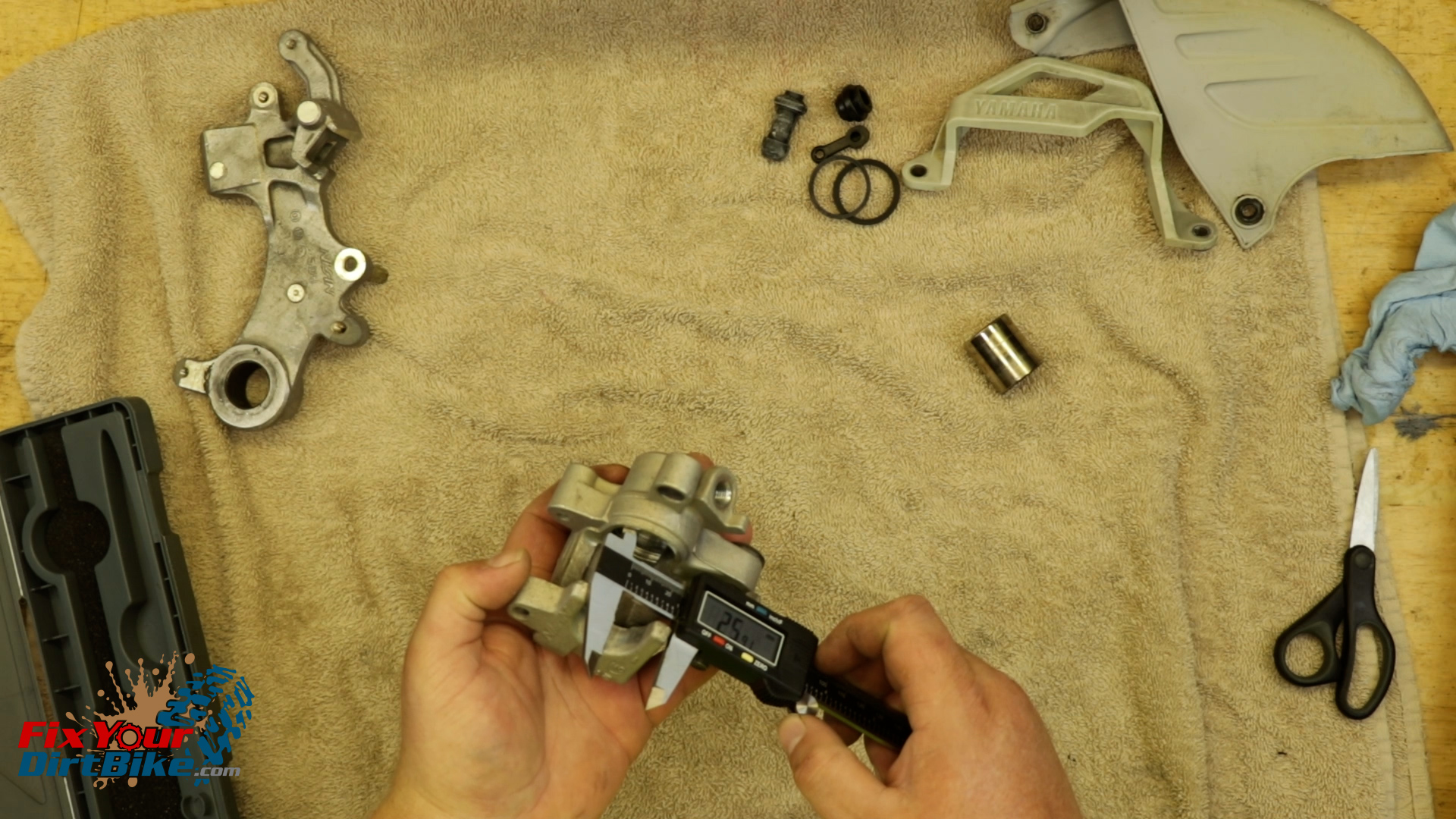
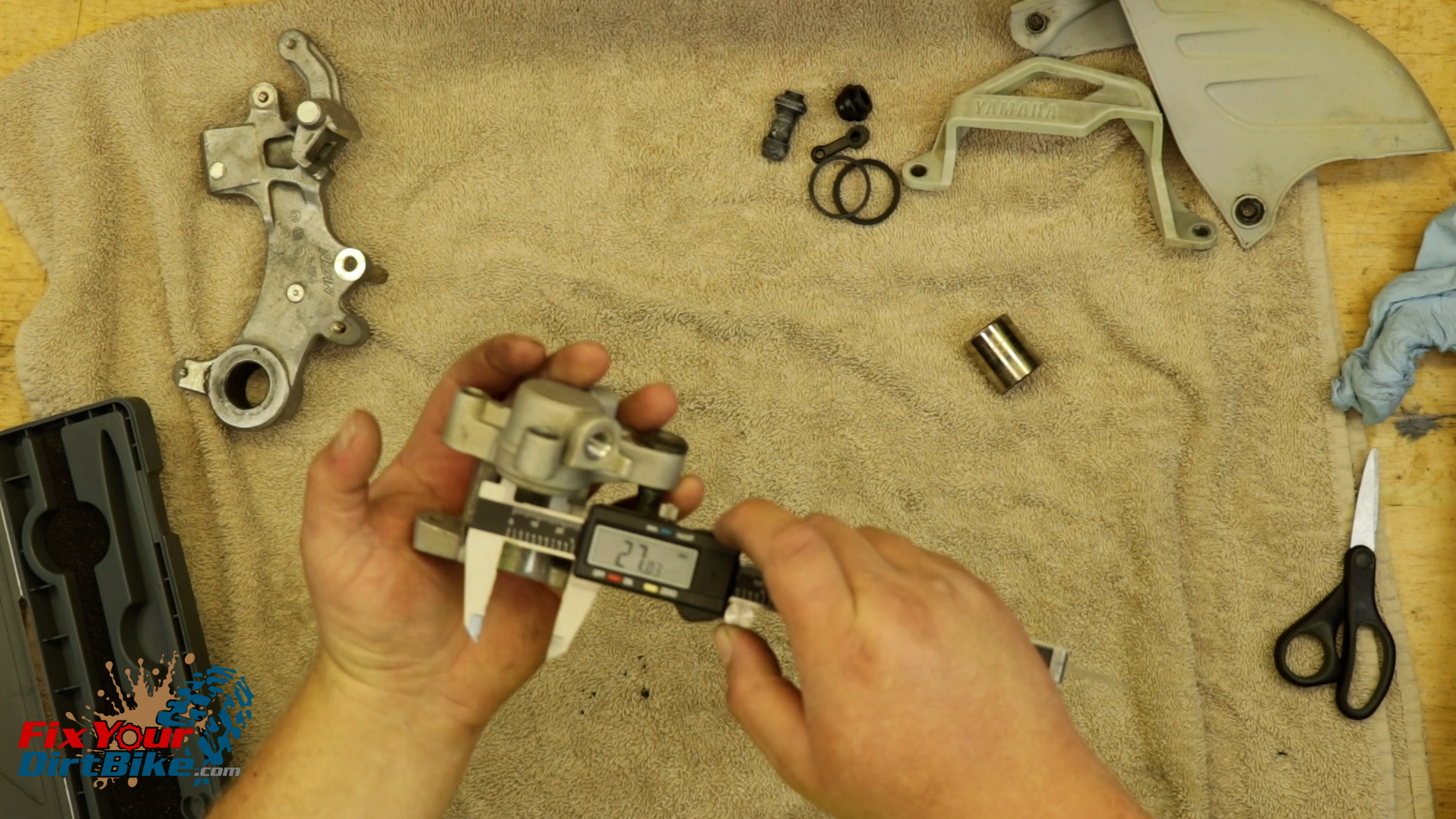
New Parts
- I am installing an All Balls Rear Caliper rebuild kit, and you can get this same kit through the link below.
- Match the old parts with the new parts to make sure you’re not accidentally throwing away something you need.
- Once you have your new parts ready, soak your new piston seals in fresh brake fluid for 15 minutes to soften and lubricate for assembly.
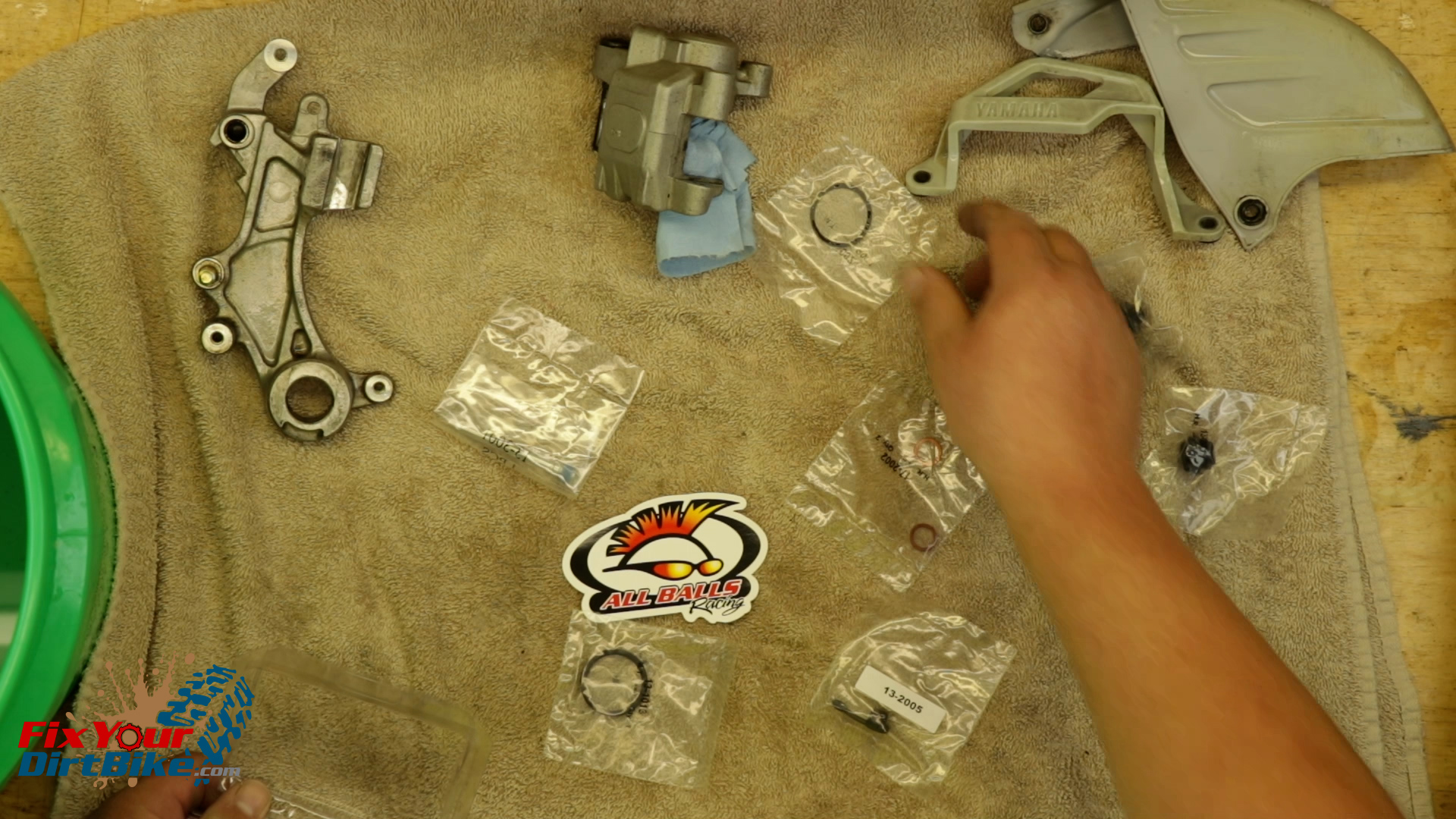
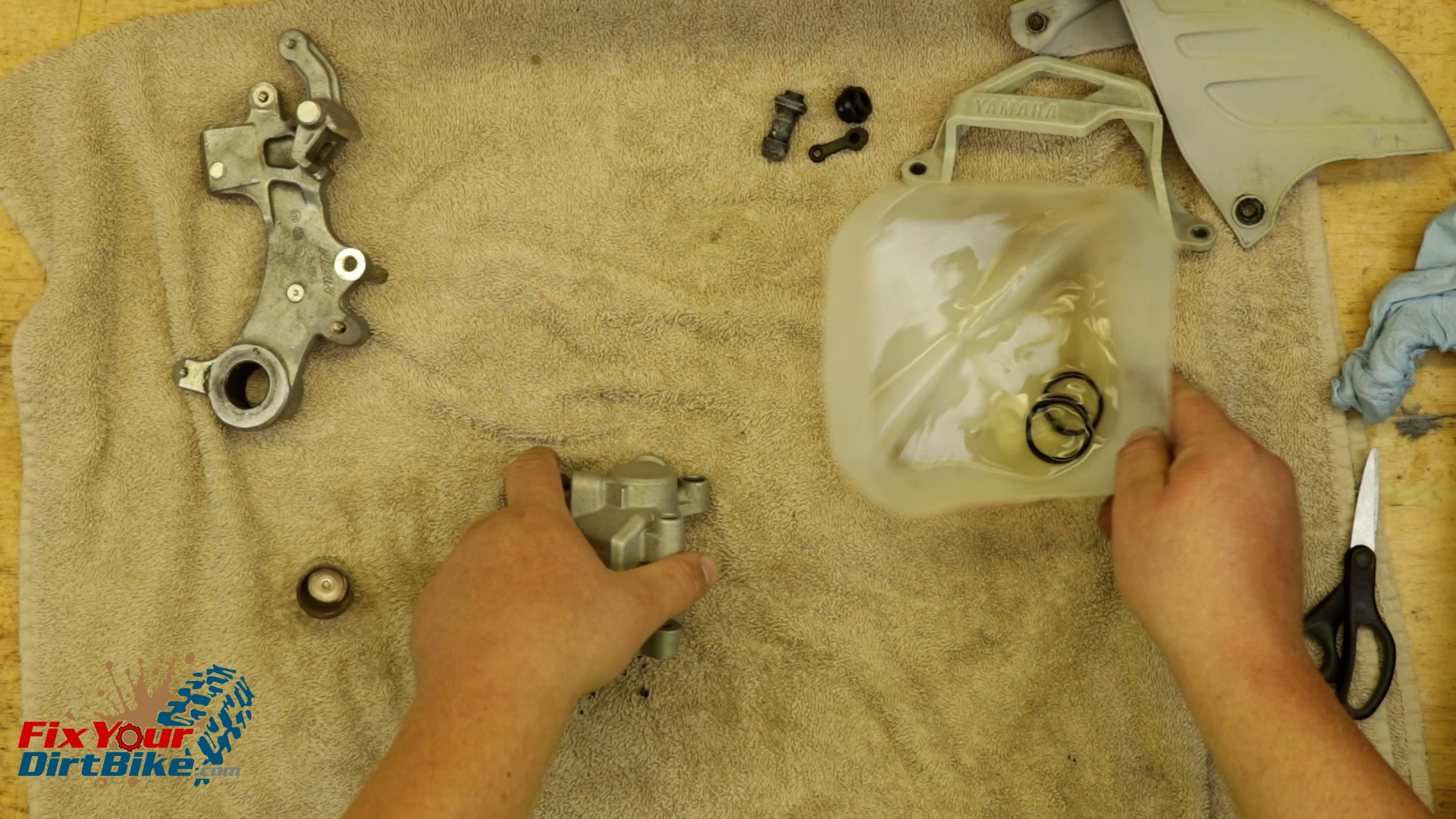
Caliper Assembly
- Start by installing your new piston seal and dust seal.
- Install the new boots. The long boot goes on the caliper, and the short boot goes on the bracket.
- Install the new bleeder valve cap, then install the bleeder valve.
- Coat the piston in brake fluid, then install the piston in a twisting motion with the open end facing OUT.
- Grease the slide pin boots and slide pins, get as much grease as you can into the boots.
- Assemble the bracket and body, then give the bracket a few pumps to evacuate any trapped air in the boots.
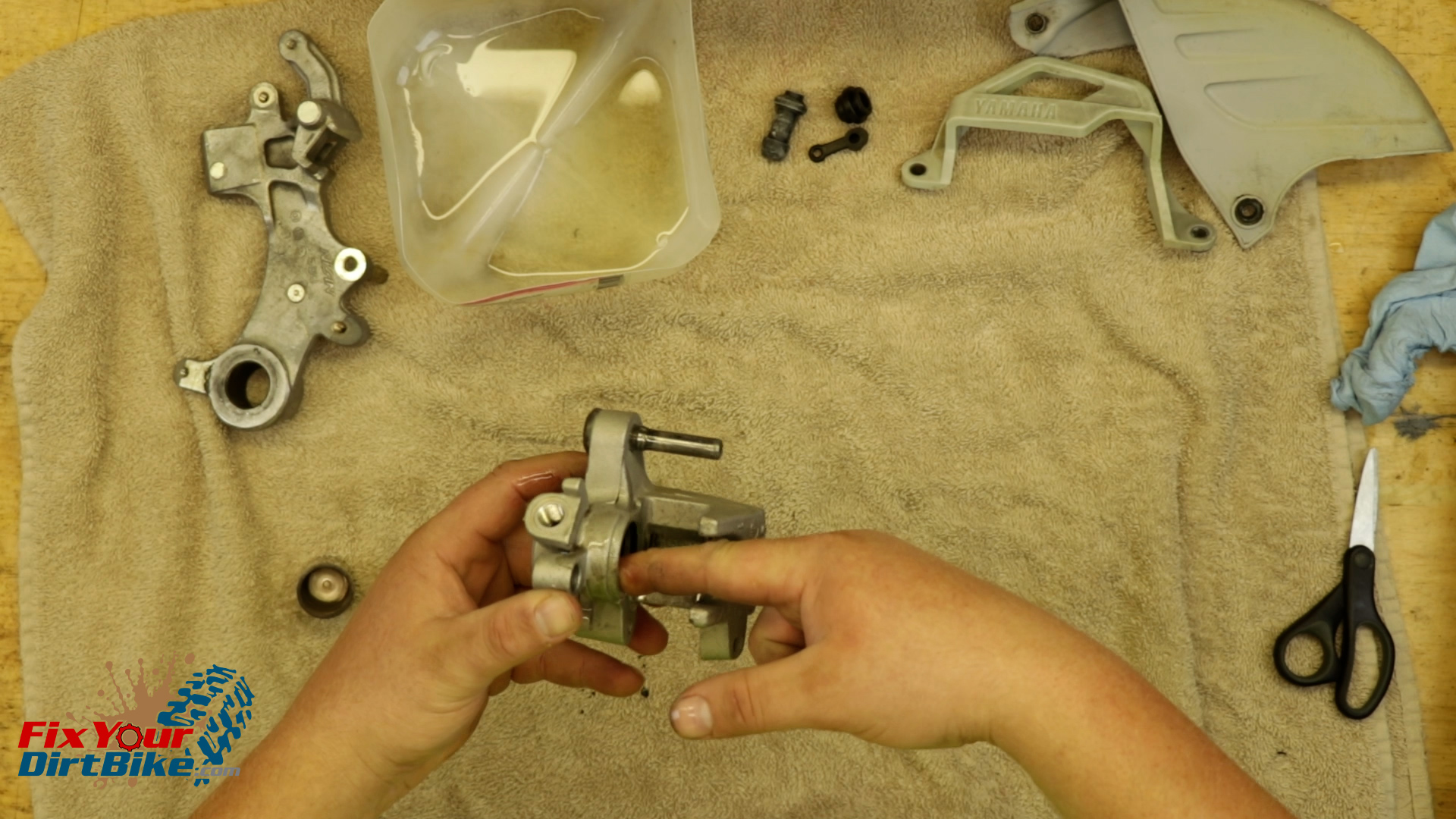
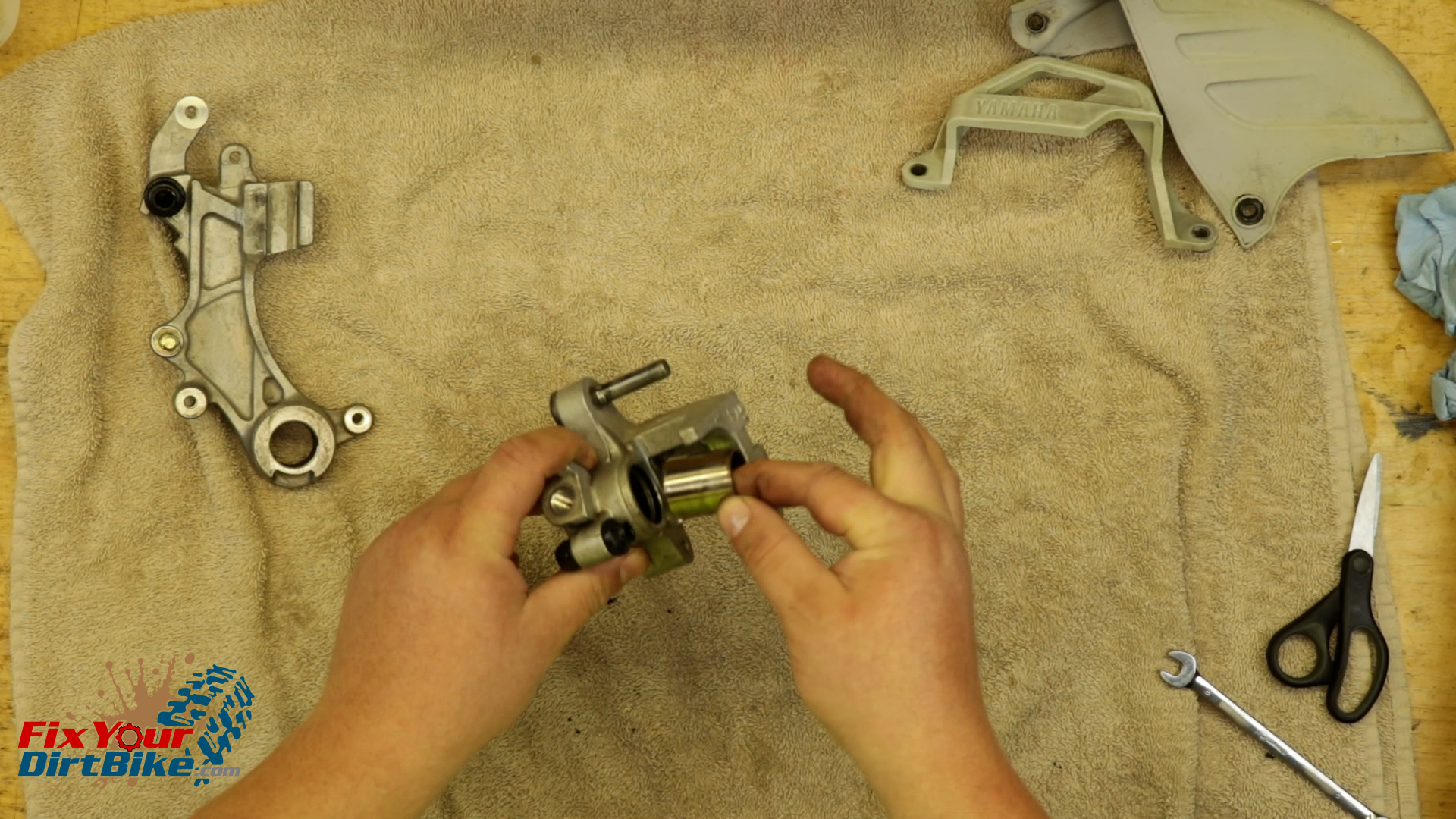
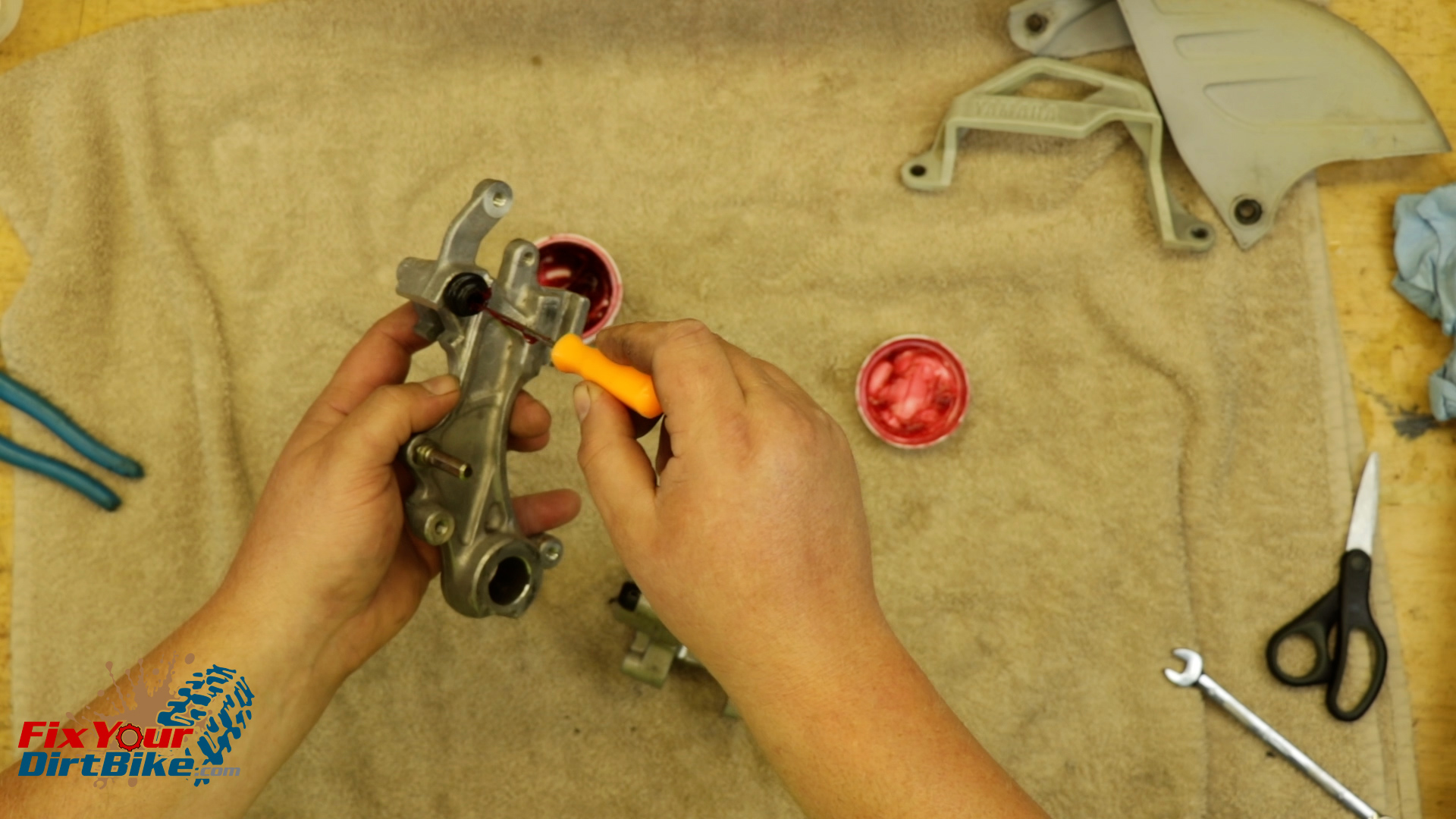
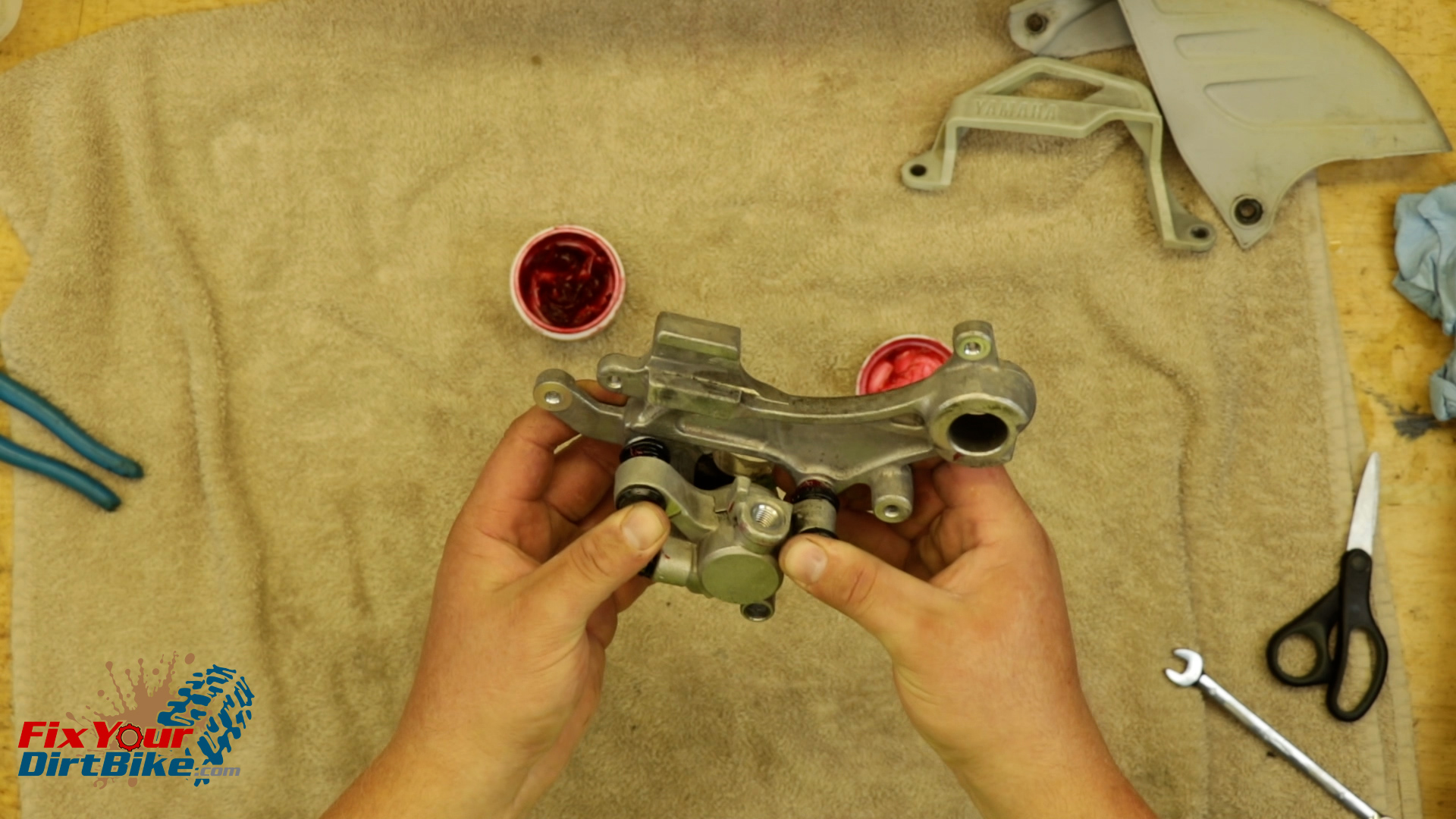
Rear Caliper Install
- Install the banjo bolt with new seal washers.
- As you will see, you can’t access the banjo bolt with a torque wrench when installed on the swingarm. So clamp the caliper bracket to the top of the swingarm.
- Torque the banjo bolt to 25 foot-pounds.
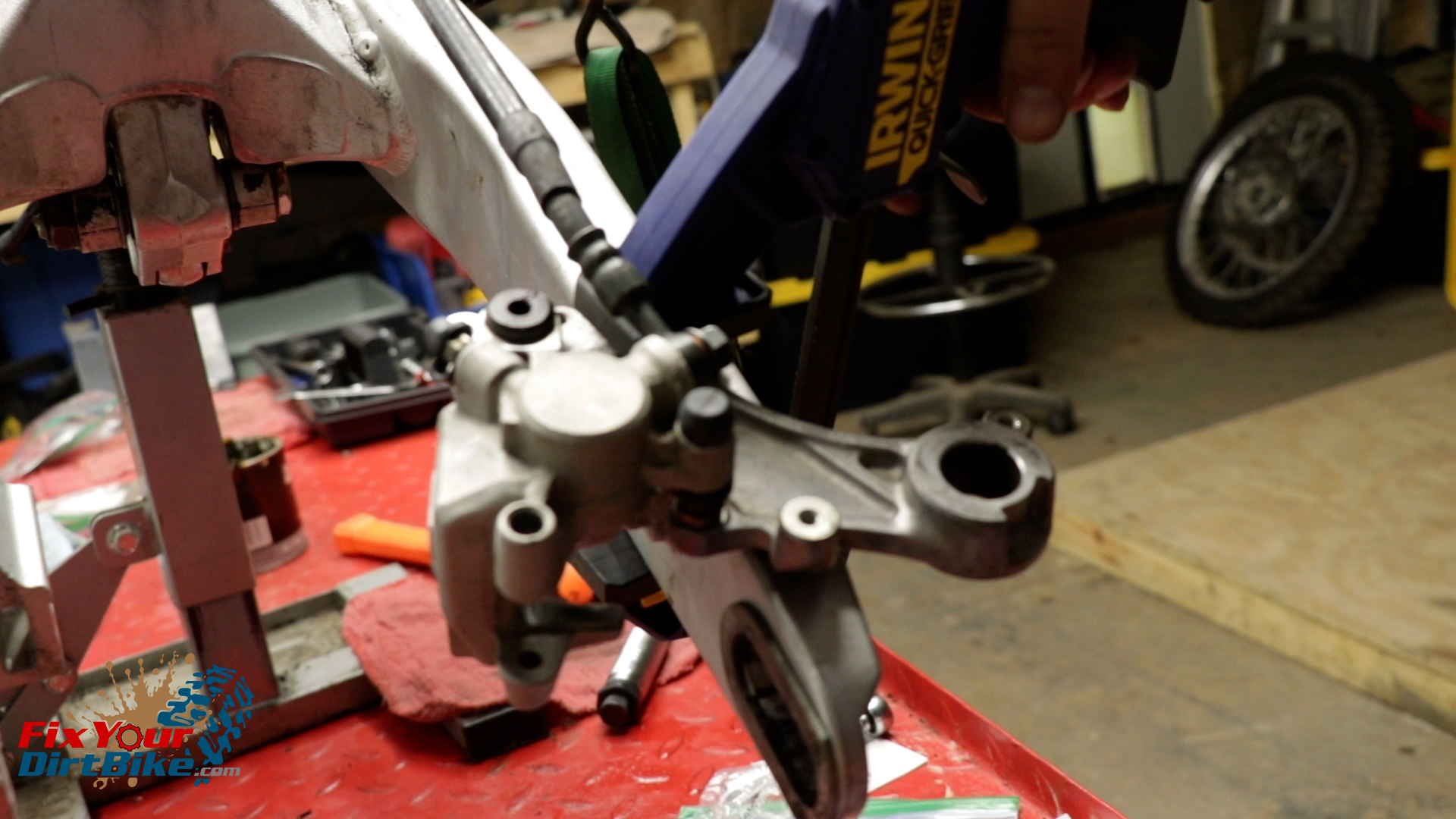
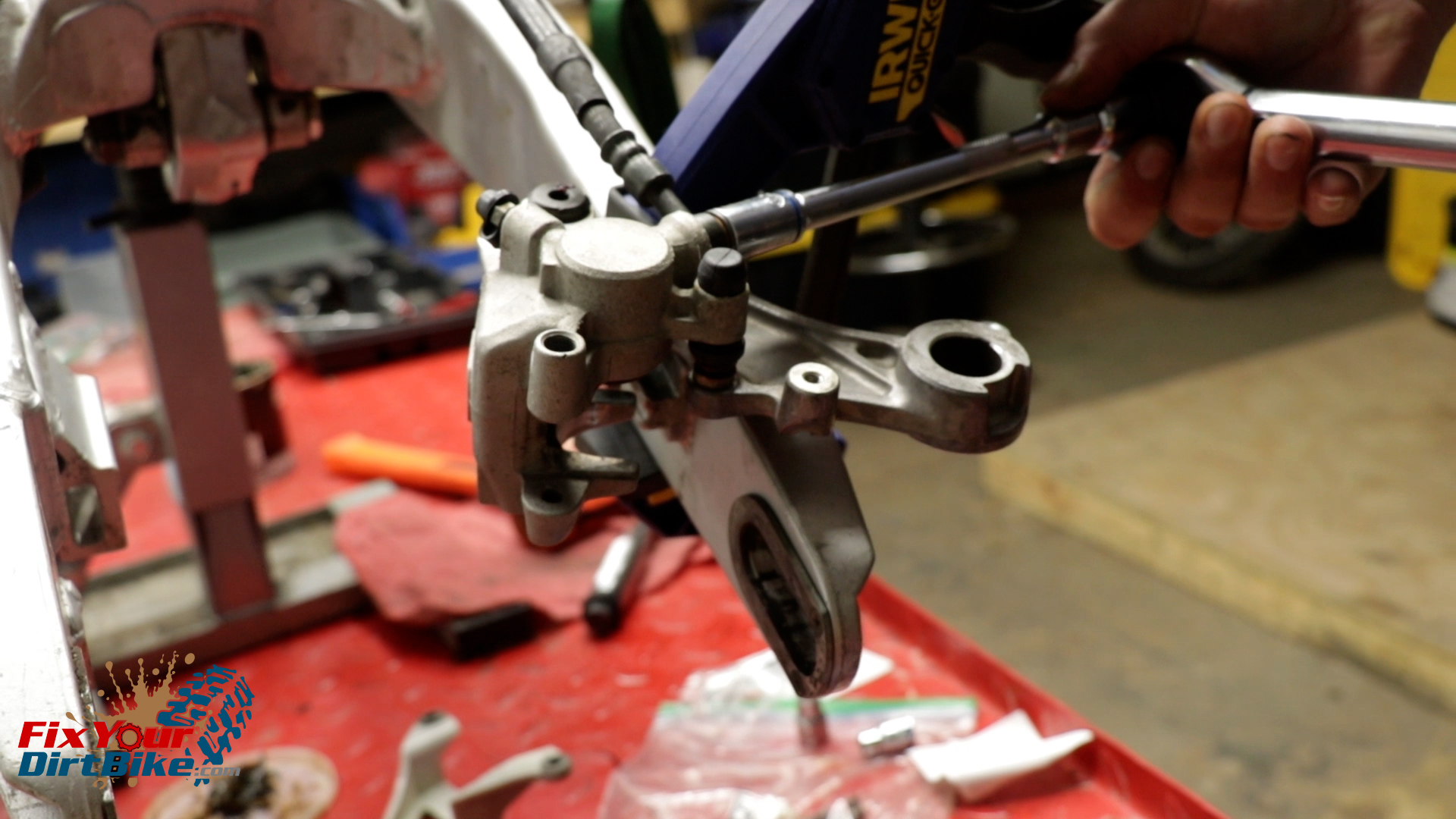
You can follow me at Fix Your Dirt Bike across all social media, and If you have any questions, please let me know in the comments or direct message!
